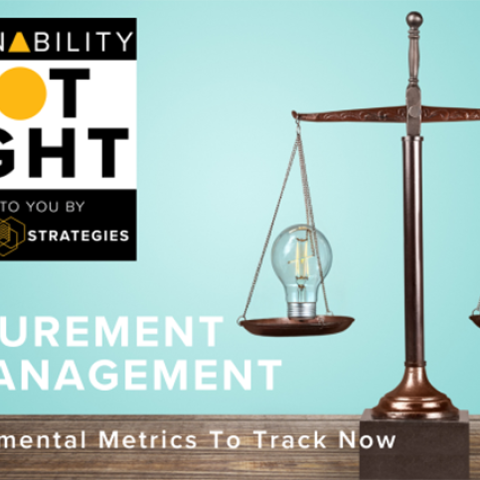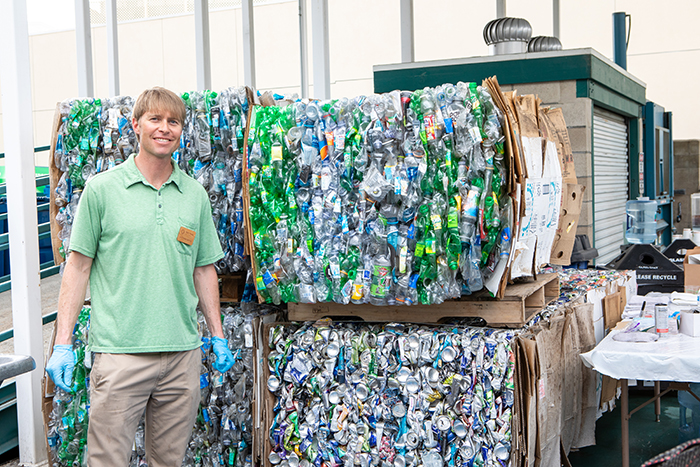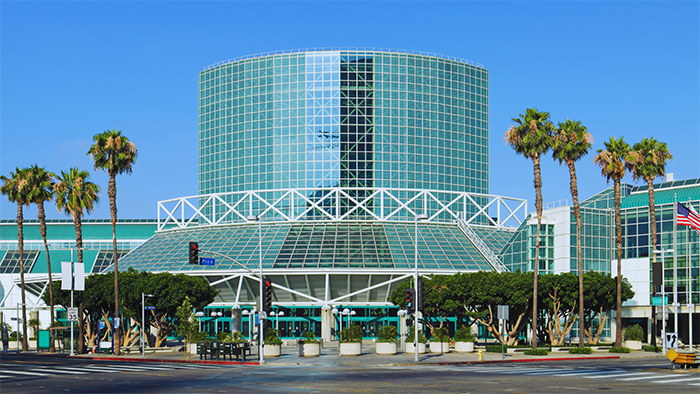From Measurement to Management: 5 Environmental Metrics to Track Now

Exclusively sponsored by Honeycomb Strategies
At Honeycomb Strategies, our data-based approach to sustainability says you can’t manage what you don’t measure. Quantitative metrics aid in setting realistic goals, tracking progress towards their achievement and transparent reporting. So, we’ve compiled a list of five data points that are vital to tracking sustainable progress for events.
1. Waste Diversion from Landfill
Events can generate a lot of waste, and without a good strategy much of it can wind up in the landfill. Landfills release methane through decomposition, which traps even more heat from the sun than carbon dioxide, increasing global warming, according to research published by the University of Colorado Boulder. Landfills can pollute the soil and groundwater, decrease wildlife habitat and endanger human communities by attracting pests and bugs and causing respiratory problems and cancer. It’s easy to see why it’s important to decrease the volume of landfills.
The metric we use to track improvement over time is waste diversion. This is calculated by dividing the weight of materials diverted from landfill (recycling + compost + donation + upcycle) by the weight of all waste, including landfill. Monitoring the downstream disposal of items helps management make smarter upstream decisions for the next event. For events held in venues that charge per trash roll-off or provide cheaper rates on recycling and compost pulls, tracking this metric can have an immediate financial benefit.

2. Single-Use Plastic
Approximately 79% of plastic ends up in the natural environment, according to ScienceAdvances. Plastic in marine ecosystems kills 1 million seabirds and 100,000 marine mammals each year, according to UNEP. One way to measure the consequences of plastic at events is the CSTM Bev tool that reveals the impact of plastic water bottles. The sustainability calculator illustrates the C02 consequences of production and the weight of plastic likely destined for natural habitats. CSTM Bev concludes that an all-day event with 10,000 guests could add 2,419 kg to its carbon footprint, equivalent to one home’s energy usage for six months, according to the EPA, as well as contribute up to 787 pounds of plastic to the environment.

One of the easiest ways to reduce plastic at events is to eliminate plastic water bottles. Companies, like Coca-Cola and Pepsi, now sell water in cans. Others, like PATH and CSTM Bev, offer custom-branded aluminum bottles. Other strategies include phasing out single-use plastic in all areas of operation, from food and beverage containers to freight packaging. Account for plastic waste transparently to motivate smart procurement changes with a goal of zero plastic.
3. Materials for Signage
Signage is critical to communicating event information, but common materials may contain harmful chemicals known to have negative impacts on the environment from production, be hazardous to human health or be difficult to recycle, such as polystyrene, vinyl banners and PVC — to name a few.
To begin to manage this impact, request a breakdown of substrates used for graphics from your general services contractor and learn the environmental properties of each material to determine what percentage of signage is aiding your sustainability goals. Armed with this information, plan early with partners to select more sustainable materials and identify end-of-use plans to determine what can be reused, donated or upcycled rather than trashed. Luckily, sustainable options are more available and less cost-prohibitive than they once were.
4. Water and Energy Use
There are many well-known consequences of irresponsible water and energy use such as aquifer depletion, pollution from coal-powered plants, impure drinking water and habitat destruction. When it comes to events, our biggest tool for measuring and managing our impacts is through our venue partners. Buildings with third-party certifications, such as LEED, WELL or EIC Sustainable Venue Standard, are required to track and manage water and energy use and can provide details on the event’s water and energy consumption.

For reduction, events rely on the infrastructure of host venues to implement solutions, such as onsite renewable energy, water reuse and energy-smart and low-flow fixtures. Replacing just a single urinal with a WaterSense-labeled model could save a facility more than 4,600 gallons of water per year and its associated costs. An onsite solar array removes stress from the nation’s aging electrical grid, delivering reliable power, according to Energy.gov.
Events can look for similar certifications and commitments from hotel partners and be judicious about destination planning. Plan water-wise menus, rent pop-up solar grids for outdoor power, source locally and encourage responsible behavior from attendees to maximize conservation.
5. Carbon Accounting
The majority of GHG emissions from events come from travel to and from the destination and local transportation. Transit is essential to gathering together, but emissions related to flights are unavoidable. So why do we need to track them?
Most importantly, we can still make reductions. For trips under 600 miles, flying has a higher carbon footprint than driving, carpooling or train travel, so setting incentives for ground transportation can lower emissions from attendees. Data can help planners arrange for local travel, such as shuttles, guidance on walking routes and partnerships with local public transit.

In addition to travel, the other metrics we’ve suggested tracking in this article have a carbon impact. Waste sent to landfill produces GHG emissions; plastics and signage materials affect C02 both in their production and tricky disposal; water and energy have a carbon cost for their processing and delivery to customers. However, there are emission-friendly choices for replacements or adjustments to all of these event staples.
In pursuit of net-zero carbon events, planners can keep in mind the walkability of their host destination, offer plant-based foods, procure supplies locally to minimize shipping, contract with hybrid or electric vehicle fleets, eliminate carpet in the expo hall…and many more. With a firm understanding of current impacts, planners can target realistic and actionable goals for improvement, both long-term and incremental.
The truth is that measurement and management go hand in hand, a cycle of continuous evaluation and improvement. Metrics can identify priorities, gaps in strategy and signal big successes, charting a course forward that ensures that the event industry maintains a balance between human activities and the preservation of Earth’s ecosystems.
Honeycomb Strategies specializes in impactful solutions for sustainable events and venues. www.hcsustainability.com Hello@hcsustainability.com


Add new comment